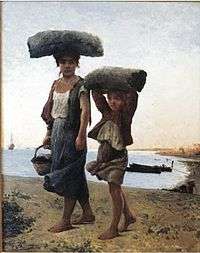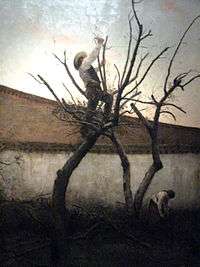Celia Castro


Celia Castro (1860, Valparaíso - 19 June 1930, Valparaíso) was the first professional female artist in Chile. In terms of style, she is generally associated with Realism.
Biography
The beginning of her artistic career came from a meeting with the painter Manuel Antonio Caro who, after seeing her work, recommended that she go to Santiago to study at the "Academia de Pintura". She followed his advice and became a student of Pedro Lira.[1] Her first exhibition came in 1884, where she presented one of her best-known works "Las Playeras" (Women on the Beach). In 1889, it won an award and was acquired by the Chilean National Museum of Fine Arts.
Thanks to this recognition, she was able to go to Paris and refine her technique. She was especially fond of painting the city's streets and corners. Upon her return, these new works prompted the government to give her a study grant and she went back to Europe in 1904.[1] She was the first woman to receive such a grant. During this visit, her brushwork became more precise. It was then she created her second best-known work, "La Poda" (The Pruning).
Eventually, she won praise from the critics in Paris and exhibited frequently at the Salon. She returned to Chile in 1927 and died three years later,[1] having paved the way for other female artists, such as Rebeca Matte and the Mira sisters, Aurora and Magdalena.
"La Poda" was later honored at a special exhibition held at the University of Concepción, as part of a display relating to the deforestation in Bío Bío.
References
- 1 2 3 Brief biography @ Portal de Arte.
Further reading
- Ricardo Bindis, Pintura Chilena, Doscientos Años, Origo Ediciones, 2006 ISBN 956-8077-34-0
External links
![]() Media related to Celia Castro at Wikimedia Commons
Media related to Celia Castro at Wikimedia Commons